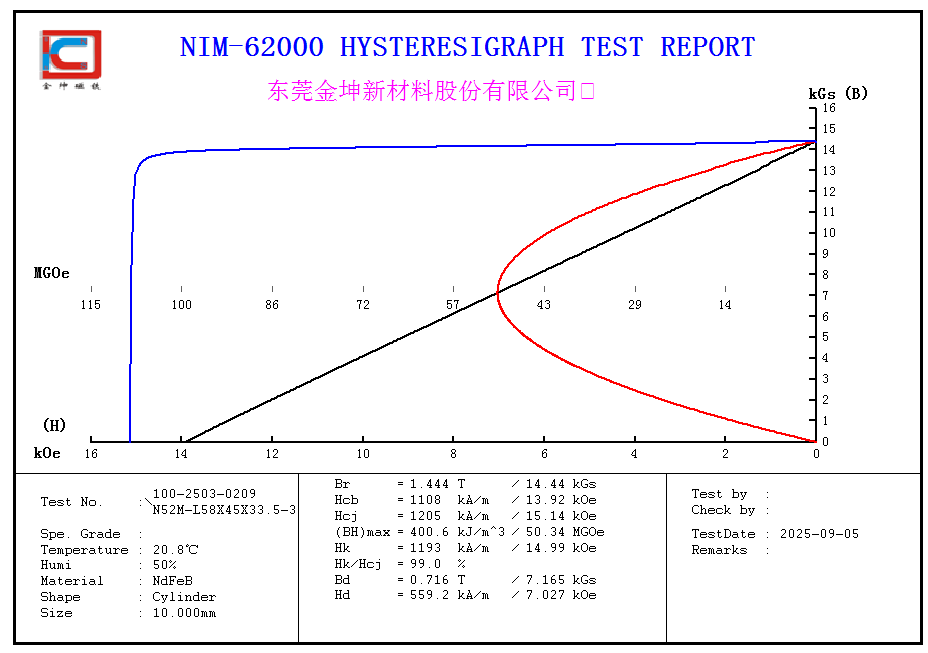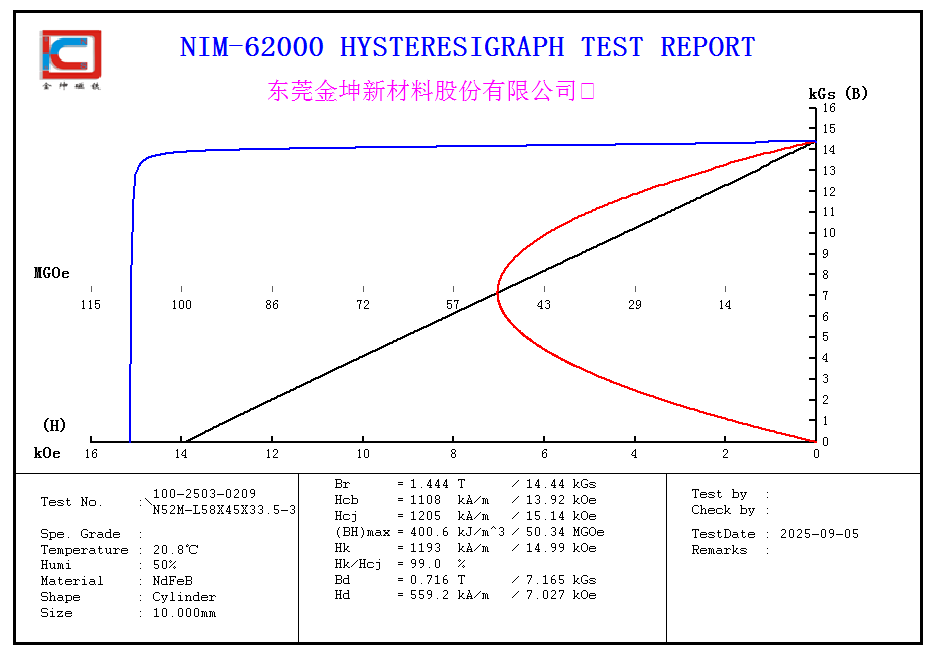Rare Earth Neodymium-Iron-Boron Permanent Magnet, M Grade
Rare Earth Neodymium-Iron-Boron Permanent Magnet, M Grade
Core Performance Parameters:
Residual Induction (Br): ~1.1–1.3 T — Maintains excellent magnetic flux density with stable magnetic performance.
Intrinsic Coercivity (Hcj): ≥ 14–16 kOe — Stronger resistance to demagnetization compared to N grade, suitable for slightly higher temperature environments.
Maximum Energy Product (BHmax): ~280–380 kJ/m³ — High energy density, meeting the requirements of most industrial and consumer applications.
Maximum Operating Temperature: ~100 °C — Improved heat resistance over N grade, suitable for mild high-temperature conditions.

Comparison with Other Grades:
N Grade: Maximum heat resistance 80 °C, suited for low-temperature and general-purpose products.
M Grade: Heat resistance improved to 100 °C, ideal for more demanding working conditions than N grade.
H Grade: Higher heat resistance (120 °C), offering balanced performance for widespread industrial use.
SH Grade: Maximum heat resistance (150 °C), higher cost, suitable for advanced equipment.

Comprehensive Advantages:
Better Heat Resistance than N Grade: Ensures stable performance in moderate-temperature environments.
Good Cost-Performance Balance: Offers an optimal trade-off between magnetic strength and cost.
Broader Application Range: Suitable for devices requiring higher temperature tolerance and reliability.
Typical Applications & Cases:
Home Appliances: Electric fans, vacuum cleaners, rice cooker motors — maintaining stable operation from normal to moderate temperatures.
Automotive Electronics: Small power motors, sensors — providing better heat resistance in vehicle environments.
Office Equipment: Printer and copier motors — ensuring reliable performance during long-term operation.
Industrial Applications: Medium- and low-power servo motors, testing instruments — meeting performance requirements under elevated temperature conditions.




Jinconn WeChat









